ARGENTINA – River cleaning work at San Bartolo farm (September 2020).
Maintenance work of the river El Dorado has started after having been delayed due to circulation restrictions. Earlier in February, our farm was affected by torrential rains and we notice so as our neighbours that water was unusually slow to evacuate as the problem was emphasised by the illegal internal protection walls build by some farmers upper the river which affected and changed water course.
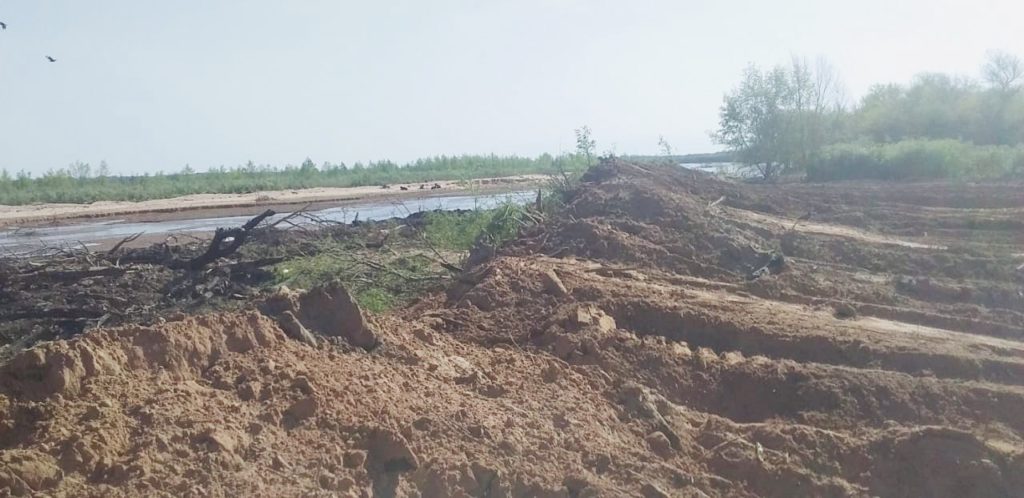
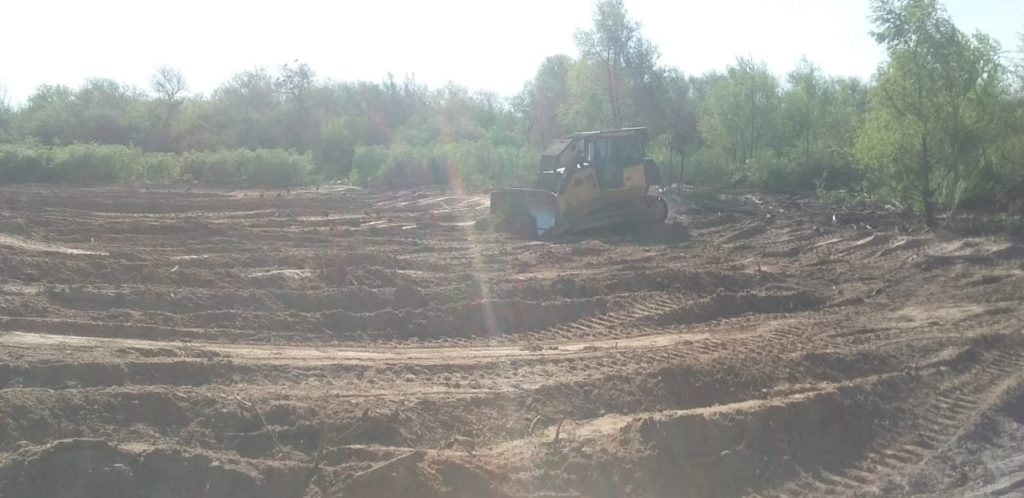
Therefore, with the support of local autorities, our objective is to redirect the course of the river and to clean the channel (digging more deeply and making it wider) to allow the river flow and thus avoid water entering in the farm. Once this first stage will be reached, we will have to drain some plots where water is still steady.
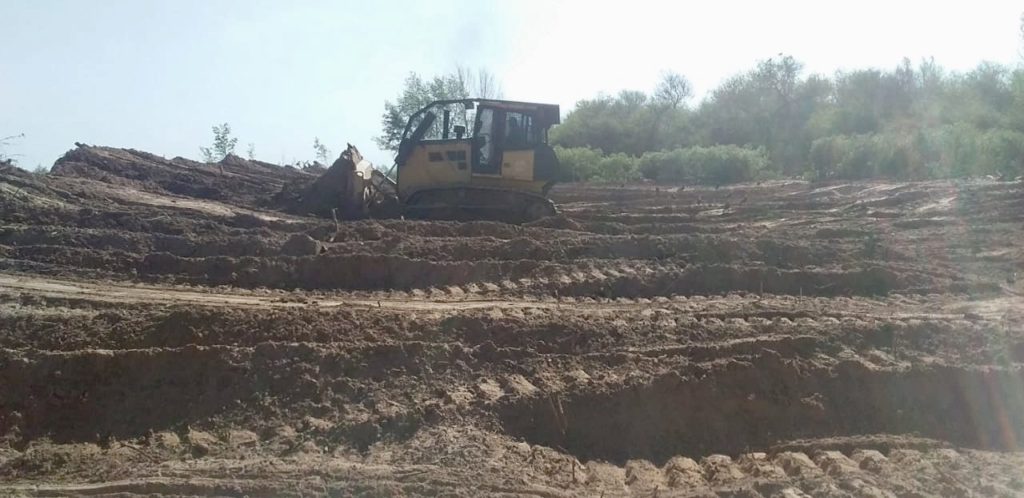
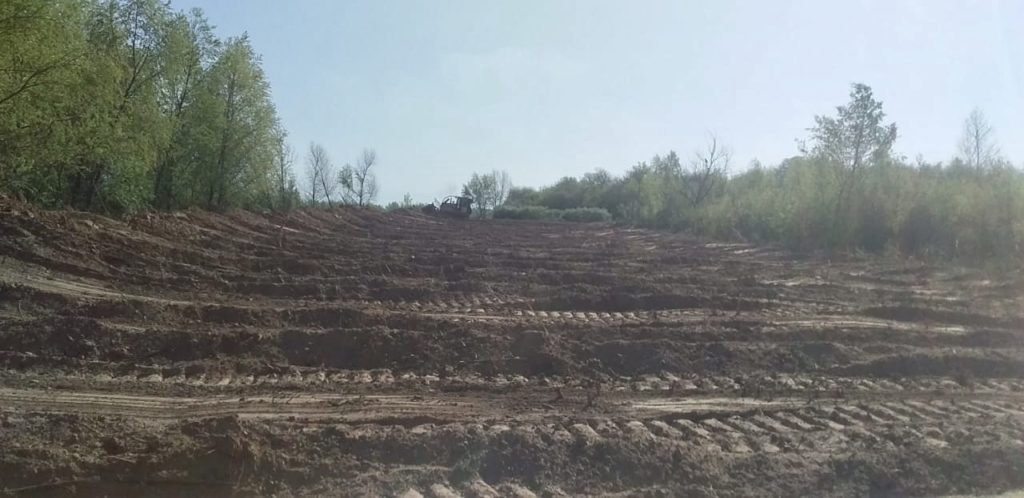
ARGENTINA – Another forest fire occurred at Tata Cua (September 2020).
In the afternoon of August 25, a fire has again started along the national road N°118 ,which borders Tata Cua forest, in our other neighbour’s farm called Vacca Moretti. Unfortunately, the departure of this fire could not be detected fast enough by our neighbor and the fire quickly spread to our forest, pushed by hot air (34°C registered on this day) and wind.
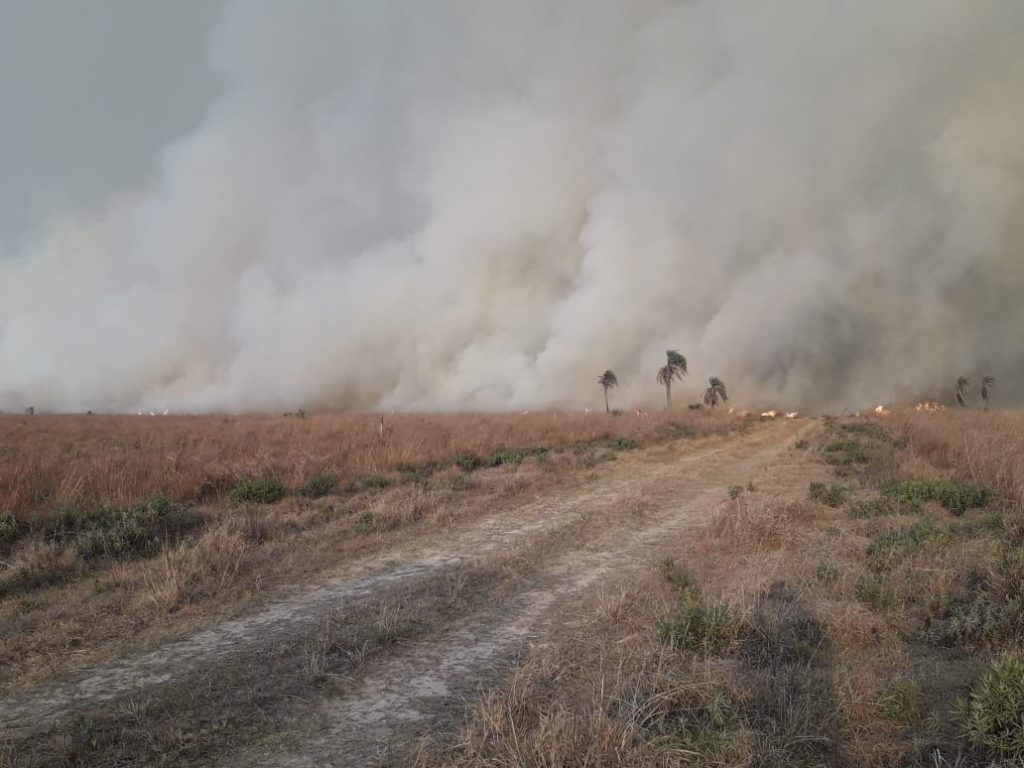
The fire reached then plots of our forest planted with eucalyptus. The youngest eucalyptus trees have exacerbated the fire. Their sap is flammable, and so is their bark, which flies off when burned, igniting new fires in the pine trees sections of our forest.
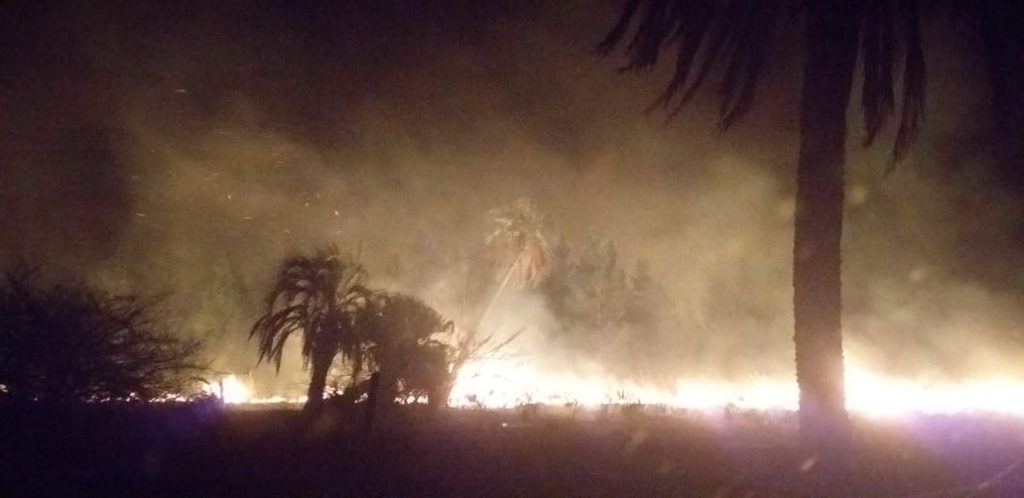
Firefighters’ and our farm personal were fighting against the fire during 48 hours, non stop, to contain it. As a result, 630 ha of our tree plantation were affected in various stages. Some equipments have burned like our solar water pump and a lot of fences. Luckily, nobody was injured and thanks to the efforts of the staff, the fire could be contained before reaching silage storage facilities and cattle area.
Preliminary investigations and evidence indicate that the origin of the fires is most likely accidental (discarded cigarette end). We have started to evacuate the spoils and replace destroyed fences.
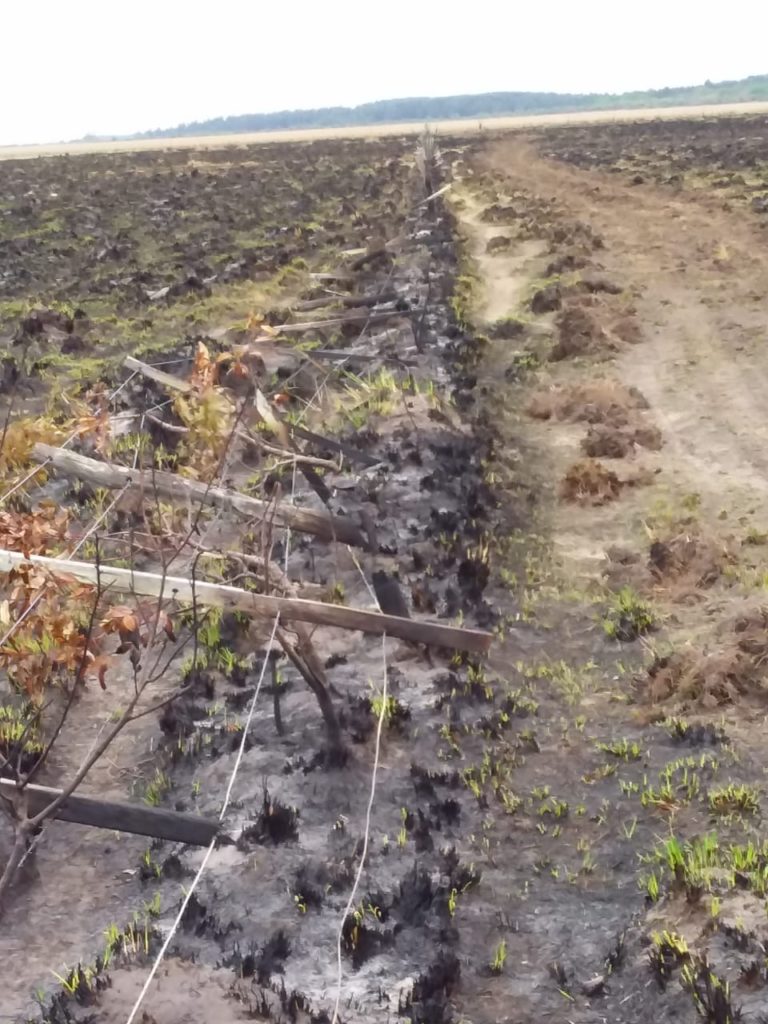

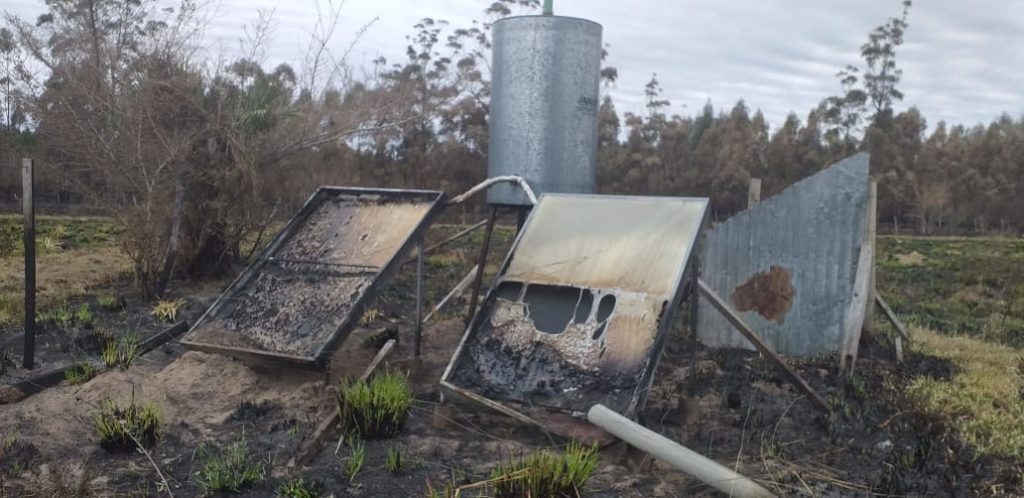
Pine trees plantations, which account for 77% of the area affected, seem to have been the most resilient to flame as their thick bark does not catch fire or burn easily. It also protects the inside of the trunk, the living tissues that transport water and nutrients, from heat damage. Pine trees also drop lower branches as the trees grow older, which helps prevent fire from climbing up and burning the green needles higher up the tree. Eucalyptus and pine trees utilize also tall crowns in order to keep flammable leaves and dead branches high from the ground and away from fire.
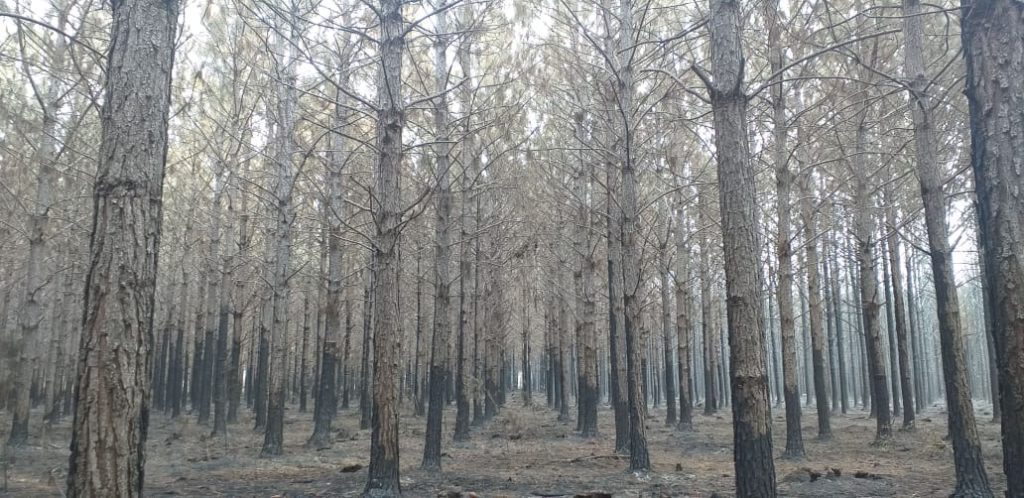
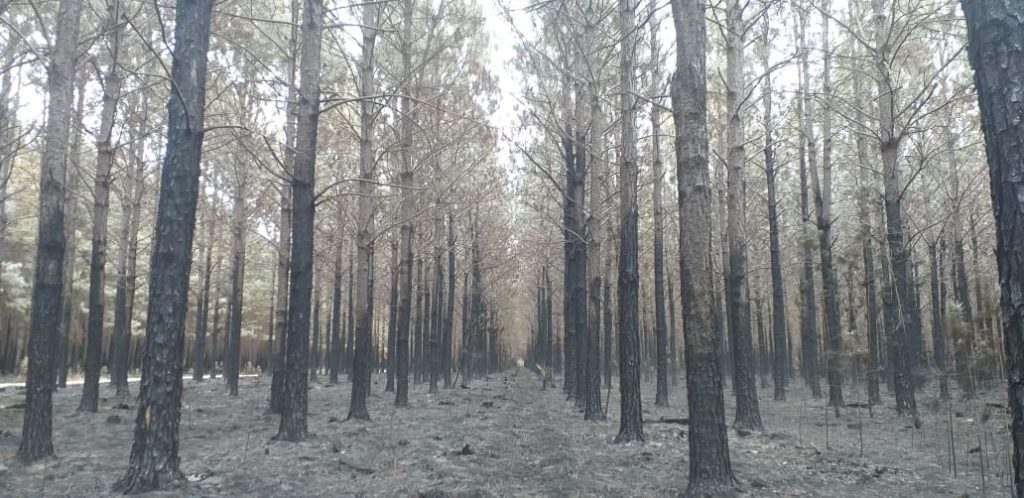
Fire can destroy the cambium (tissue between the wood and the bark that actually grows to form wood in trees) over a part of the tree trunk surface without necessarily killing the tree. The consequences for the tree are then proportional to the height of the charred trunk. Furthermore, both species of our trees affected have a high capacity to regenerate.
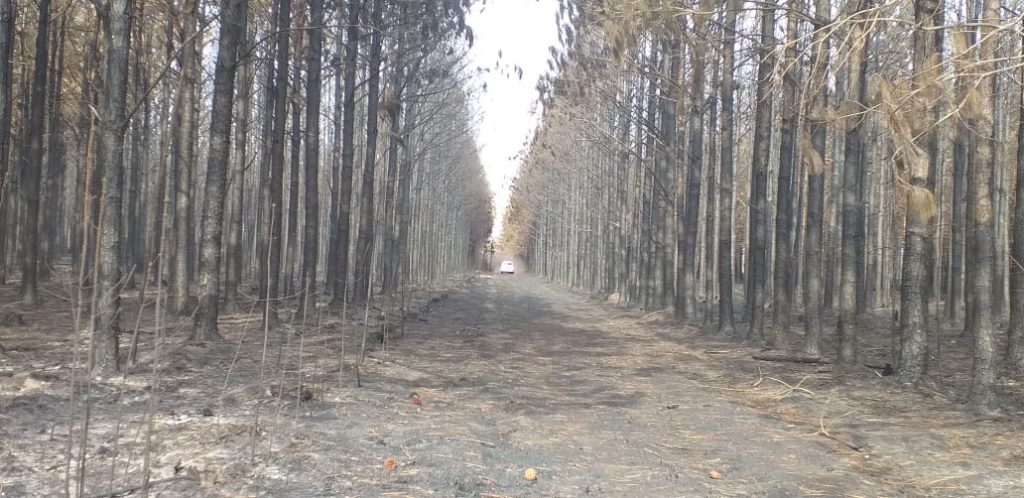
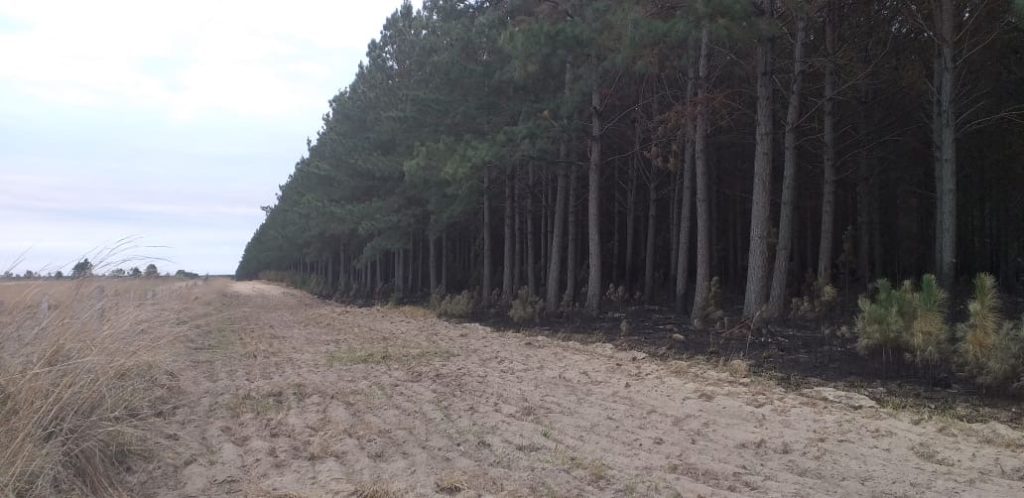
We are going to analyse each woodlot with our forest experts to valuate the damage to the trees and actions to be undertaken. We will have to treat the trees against parasites attacks, which rapidly colonize the area covered by the fire, as well as against root pathogens as fire favored them.
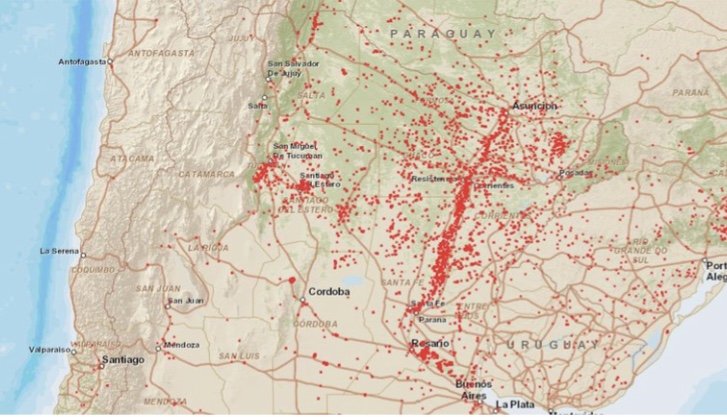 source: NASA FIRMS
source: NASA FIRMS
Wind, drought, high temperatures, an explosive combo: This fire was not an isolate event as 300 others have occurred in our close area (Article from El Litoral dated 11/08/20) and from a national perspective, 11 provinces are currently hit by fires and so far over 120,000 hectares on farmland have burned (Article from Infobae dated 26/08/20).
PARAGUAY – Sowing season has started at Salitre Cue farm (27/08/2020).
Sowing: On August 27, we began with the rice sowing period and started to sow block G (540 ha – in yellow). Our objective for the cycle is to sow our so called “base” surface of 1,600 ha and the production is dedicated 100% to IRGA 424 cultivation.
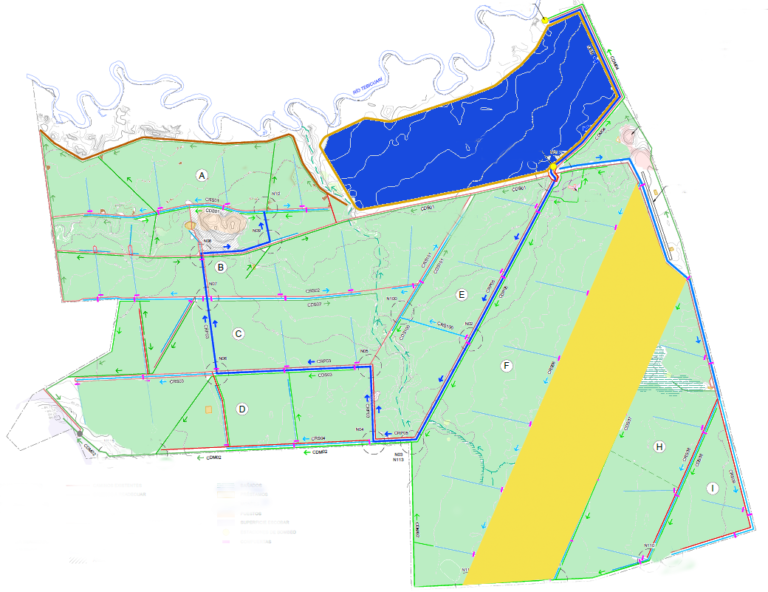
Our strategy is to sow in 3 stages the full surface allocated to paddy rice production. This way, we can have a harvest in stage and reduce our operating risks (weather issues and irrigation restrictions) while we will have a better control of the plots as they are not going to be all in the same stage at the same moment.
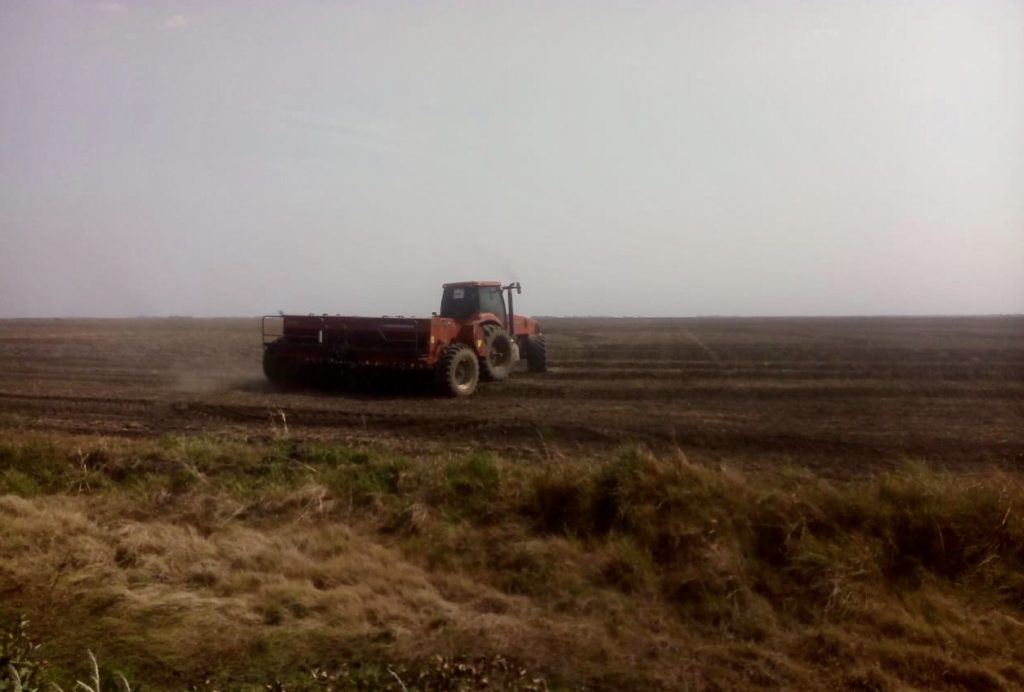
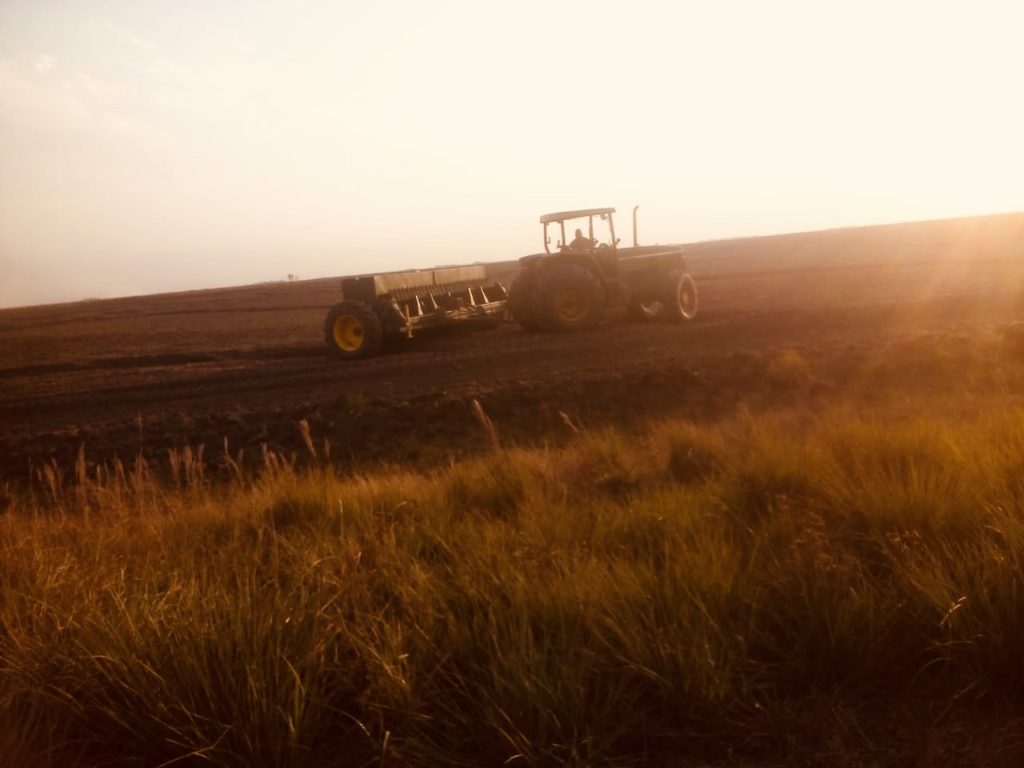
Weather: Our biggest concern is the forecast of “La Niña” climatic phenomenon. Already, we registered less rains than usual during its peak period (July/August) and the forecast are not encouraging. We need water to irrigate the field after sowing occurred. We can mitigate some shortage thanks to our reservoir but not for the entire irrigation cycle of the full seeded area. For this reason, we are also sowing in stages in order to have not all the surface at the same time under irrigation. But likely, our biggest challenge this year will be to manage water availability so as all producers.
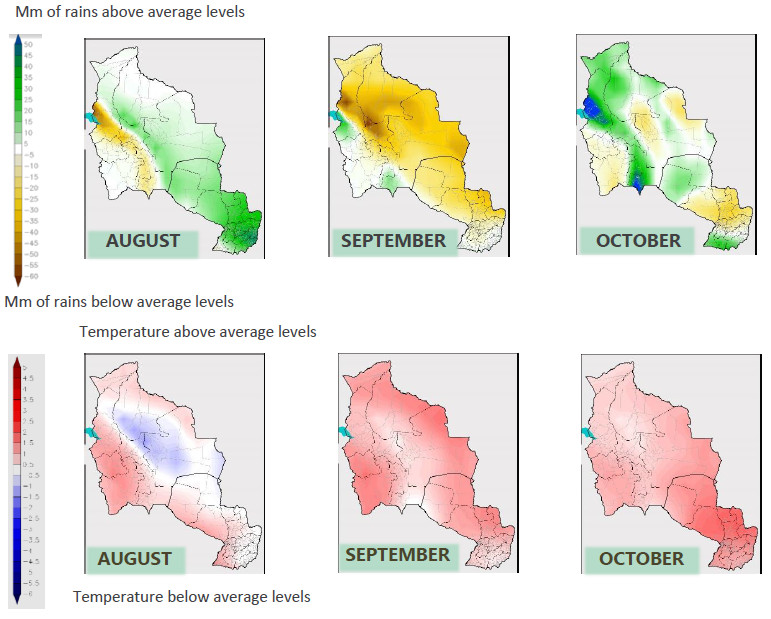 Market: Locally paddy rice price rise recently in Brazil (+17% month on month in real). The weakness of the real, which reached a record low at 5.89 per dollar on May 14, has sharply increased the competitiveness of Brazilian paddy exports. Additionally, extremely tight paddy stocks in the US South have meant that Brazilian exporters have faced little competition selling to Central America and Venezuela this year. During the first half year, exports went up by 79% year on year. Meanwhile, the weak real has hindered imports, which went down by 12% year on year during that period. So Brazilian mills are now buying from neighbouring countries (Paraguay, Argentina and Uruguay) to supply the domestic market and protect their market share. This drives up paddy prices.
Market: Locally paddy rice price rise recently in Brazil (+17% month on month in real). The weakness of the real, which reached a record low at 5.89 per dollar on May 14, has sharply increased the competitiveness of Brazilian paddy exports. Additionally, extremely tight paddy stocks in the US South have meant that Brazilian exporters have faced little competition selling to Central America and Venezuela this year. During the first half year, exports went up by 79% year on year. Meanwhile, the weak real has hindered imports, which went down by 12% year on year during that period. So Brazilian mills are now buying from neighbouring countries (Paraguay, Argentina and Uruguay) to supply the domestic market and protect their market share. This drives up paddy prices.
Brazilian average paddy prices 2019/2020 (USD/t – Rio Grande do Sul)
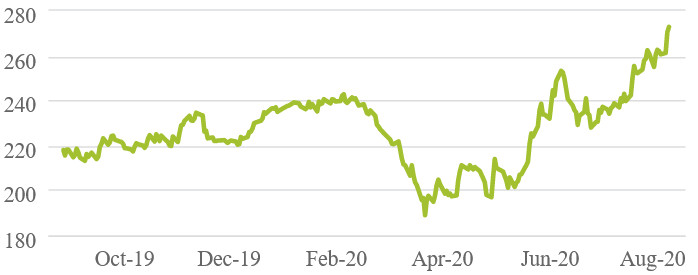 Source: ESALQ
Source: ESALQ
Furthermore, international rice prices are also following currently this trend. The price of rice which is a staple food in Asia, has rencently hit 7-year highs due to the Covid-19 outbreak as importers rush to stockpile the grain while exporters curb shipments. According to Reuters, rice prices are now at their highest since late April 2013. The rise in prices is due to expectations of higher demand for Thai rice after fellow top exporters India and Vietnam both facing export disruptions due to Covid-19. Labour shortages, logistical disruptions and the importance of rice as a staple food have leads to export curbs.Earlier this year, North America, Europe and China faced also labour shortages and supply line disruptions during their spring planting due to the pandemic. All those factors explain the recent boom in rice prices. We hope that we are going to benefit from those prices when our harvest will be completed in March/April 2021.
ARGENTINA – Update on Curupi Pora farm activities (August 2020).
Situation/weather: As previously indicated, we are concerned about the drought situation we are facing in Corrientes province. We still haven’t recorded any rain and continue to suffer from wide daily fluctuation in temperature with hot extremes (8° C in the morning vs 34°C in the afternoon). According to weather expert, we will face this year “La Niña” climatic phenomenon with its peak in November. This climatic phenomenon is characterized in our region by a heat waves and dry weather. September should be like August and we might only get some rains in October.
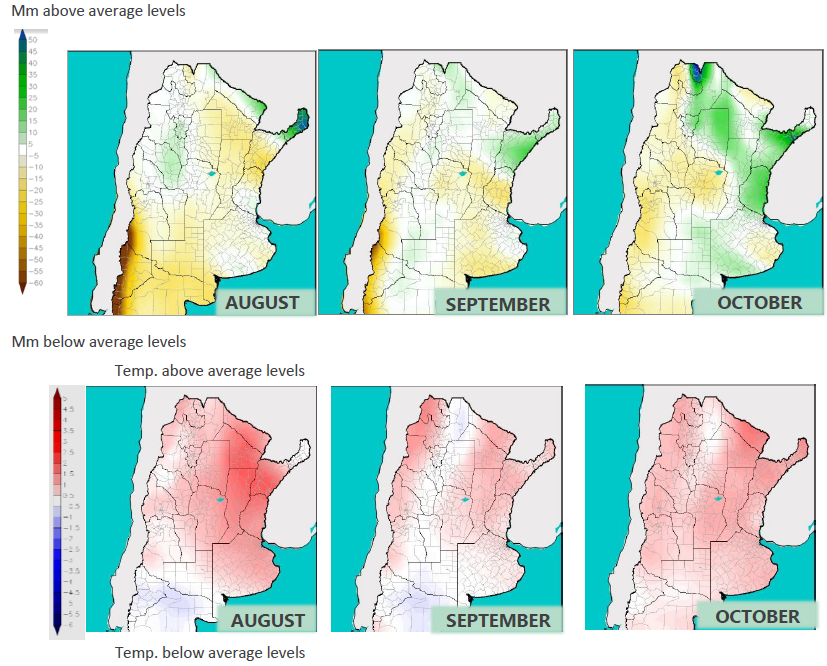
Cattle operation and pastures: We have currently above 6,400 heads at the farm. Heat stress can strongly impact the animals at various levels (well-being, production, diet, fertility, etc.). To management this stress, we are adjusting food supply (silage, completed with corn and pellets). Grassing area has reducing given the lack of water and OAT, sowed earlier this year, is also emerging hardly. For Ray-grass, we are in the 1st grassing stage.
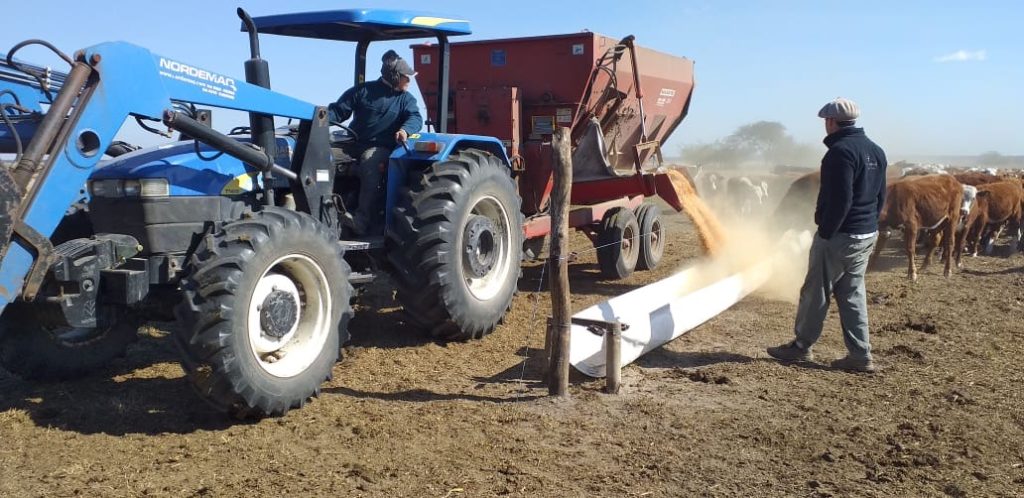
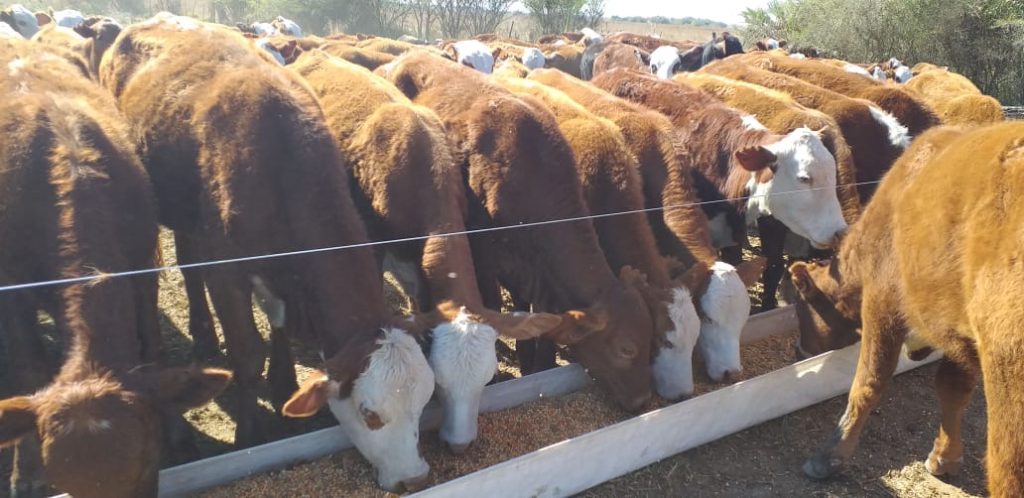
In addition, we are also making sure that the herd has sufficient watering. To regulate its temperature, a cow will increase her breathing rate and sweat a lot. A cow loses 15 to 20 liters of perspiration in winter and above 40 liters by hot temperatures. Cattle daily water needs is equivalent to 8- 10% of their live weight. In average, 50 litres per day but by hot temperatures, they will need above 70 litres per day. Therefore, we should not only take into account availability of pastures but also water.
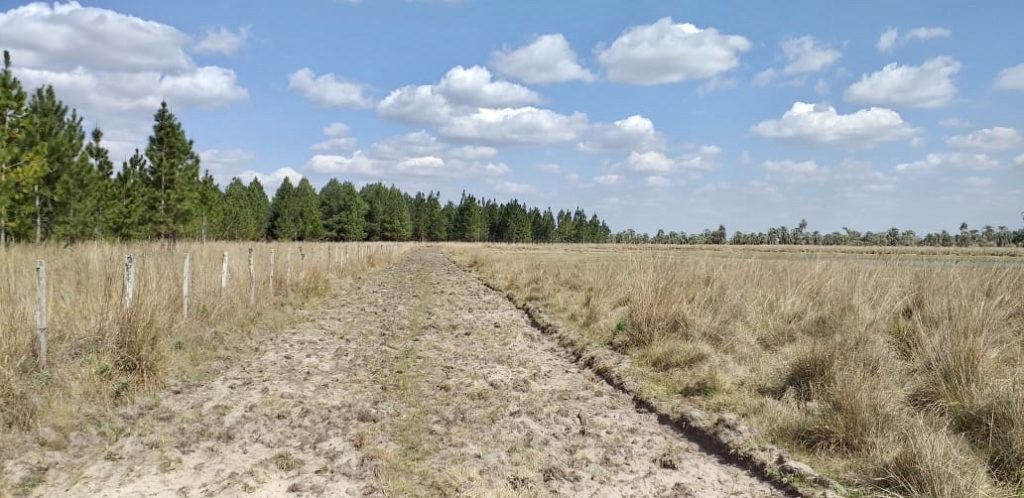
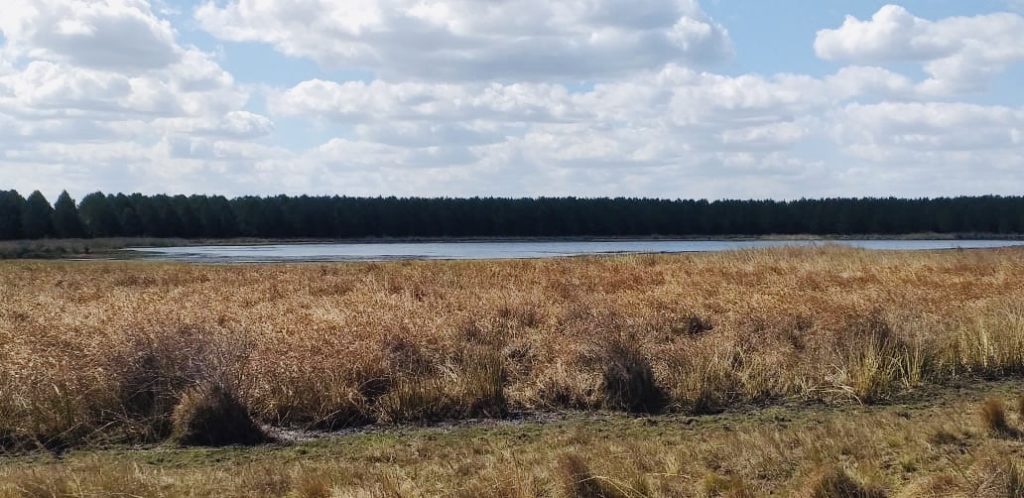
To address those needs, we have dense infrastructures at the farm: a big natural lagoon, the river Santa Lucia as the riverside is completely clean so that the cattle can go down, drink water, and come back to the plots. We have several drinking troughs all over the farms with pipes connections from main or secondary tanks to those drinking troughs.
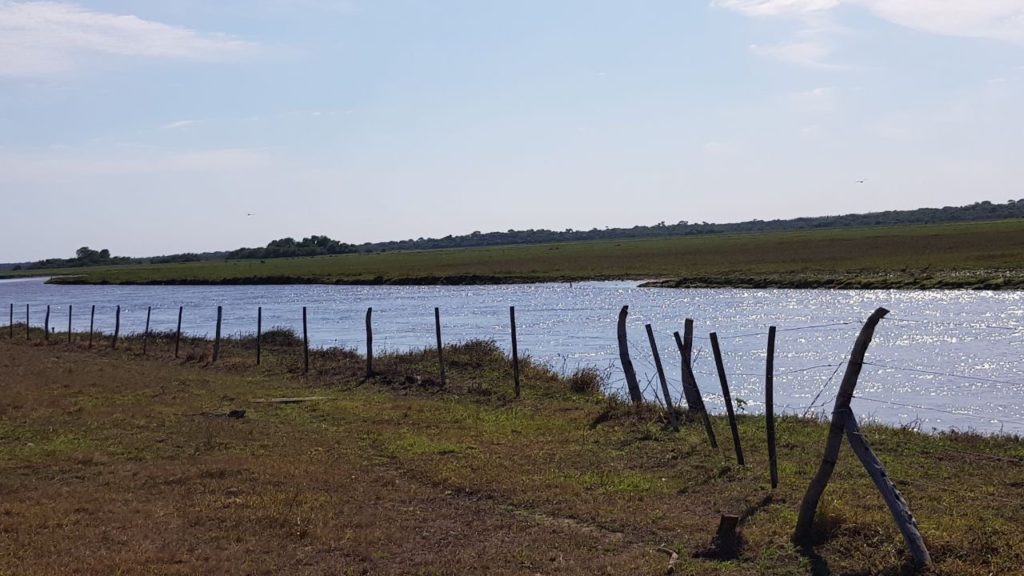
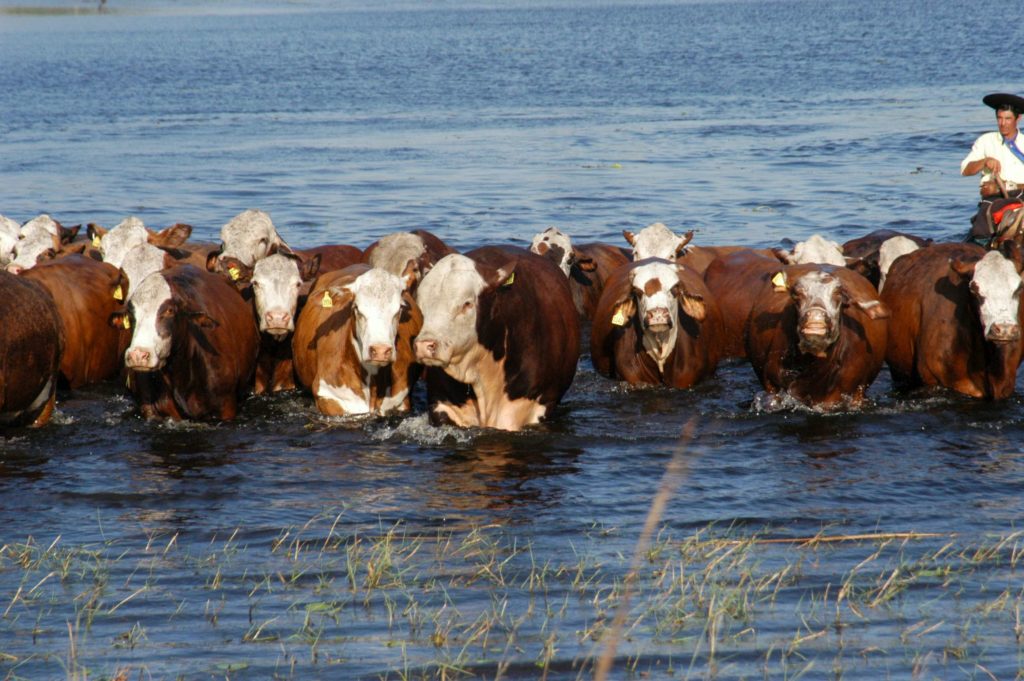
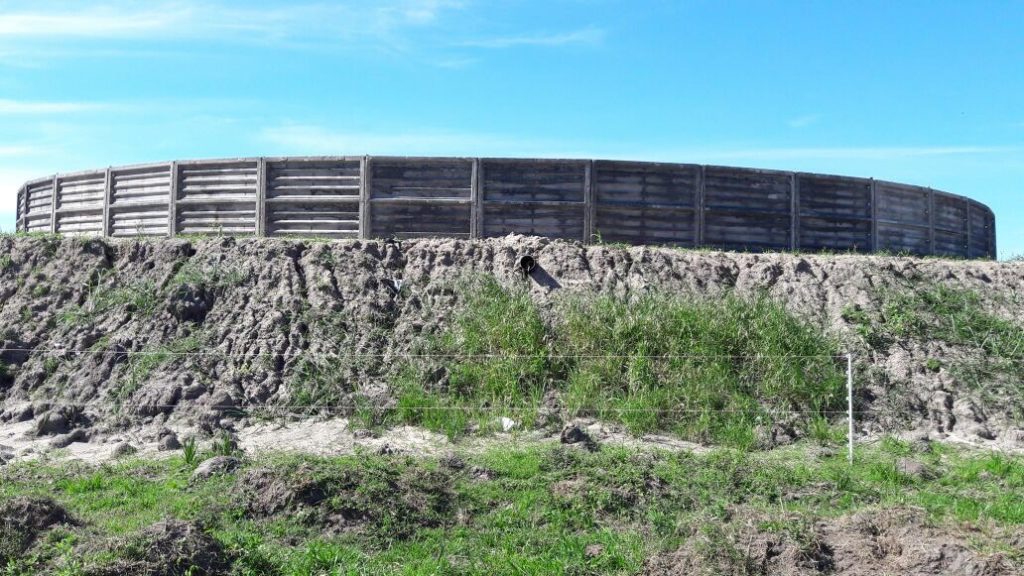
We have also water rain collectors such as little lagoons (tajamares or bañados in low lands) and 2 Australian tanks (each with a 400,000 litres capacity) powered by a solar powered pump delivering 30,000 liters of water in 8 hours. We operate 10 wells and transportable water tanks with a capacity of 30,000 liters. For now, all animals are in good shape and we are applying a close control protocol. Here you can see 2 years old heifers which are going to be in service in October.

We recently faced an attempted cattle rustling. Thanks to the vigilance of the staff, it could be aborted and 2 among the 4 robbers have been arrested. All the Province is facing a boom in cattle rustling as the argentine situation is worsening (Article of La Nacion dated 19/08/20). We have emphases our controls so as mutual assistance between neighbors in this area.
ARGENTINA – Forest fire under control at Tata Cua (August 2020).
On Monday 10, 2 forest fires were triggered overnight along the road N°118 which borders Tata Cua forest and our neighbours’ forest called Ana Cua. You can see on the picture, the fire affecting Ana Cua forest.
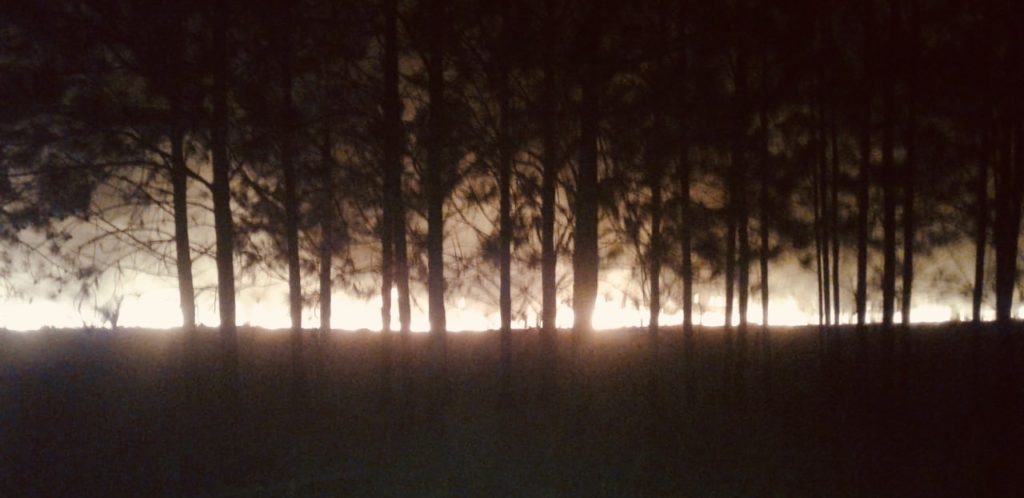
Fortunately, our trees were not affected. Our local manager, Ricardo Borda, with the support of all the team there reacted immediately to control it and save as much as possible of wire fences. Our people also provided assistance to our neighbor to prevent the spread of fire to our forest.


The current period is favorable for forest fires, because the combined effects of drought and low water content of plants are added to the traffic of the national road. The origin of the fires is most likely accidental (discarded cigarette end).

We could avoid the worst as bordering roads have been cleaned to prevent fast-spreading fires and thanks to the quick reaction of all the team. Nobody was injured and our insurance should cover the damage caused.
